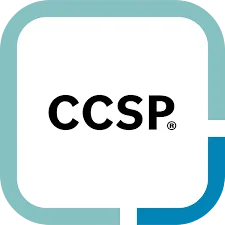Get new IT skills, get certified and lift your IT career to new heights without breaking the bank!
Unlimited Training - IT Courses and Certifications made simple and insanely affordable. Get access to 60+ LIVE instructor-led Courses for the price of less than one course.











course: ISC2 CCSP - Certified Cloud Security Professional
Duration: 5 days
Format: Virtual or Classroom


Overview
Advance your career with the ISC2 CCSP - Certified Cloud Security Professional. Our expert-led training prepares you for success in the CCSP certification exam, propelling your career to new heights. Gain in-depth knowledge of cloud security, become certified and enhance your skills to meet industry demands.
 Instructor-led training
Instructor-led training Practice test
Practice test Pre-reading
Pre-reading Personal Learning Path
Personal Learning Path Certification Guarantee
Certification Guarantee Email, chat and phone support
Email, chat and phone support









Who is this course for?
The ISC2 CCSP - Certified Cloud Security Professional course is intended for IT professionals and security managers responsible for securing cloud environments and services. It covers various areas including cloud concepts, architecture, data security, platform and infrastructure security, application security, security operations, and legal and compliance aspects of cloud security. By completing the course and obtaining the certification, individuals demonstrate their expertise in securing cloud environments, understanding cloud architecture and design principles, implementing data security measures, managing cloud platforms, and addressing legal and compliance requirements. The CCSP certification validates their knowledge and skills in cloud security and enables them to effectively protect cloud-based systems and data.
Curriculum
Preparation
At Readynez, we provide many resources and have experienced experts in the field. That is why we are also very successful with many satisfied customers. You can therefore safely take your course with us. To take our CCSP course, you need to have some experience in the field in advance.
You thus have the perfect starting point to take the course with these prerequisites:
Meet some of the Readynez Instructors you can meet on your course. They are experts, passionate about what they do, and dedicated to give back to their industry, their field, and those who want to learn, explore, and advance in their careers.

Kevin has served for years as an authorised instructor for (ISC)2 and is renowned for his 20-year contribution to learners training for IT security skills
Kevin Henry is a well-known and highly respected expert instructor with Readynez.
Kevin has served for many years as an authorised instructor for (ISC)2 and he is renowned for his 20-year contribution to learners training for IT security skills- and certifications such as the CISSP, CSSLP, CISM, CISA and CCSP everywhere in the world.
Kevin is a force to be reckoned with, being an authorised instructor and training no less than 9.000 online learners monthly in the fields of information security and audit, in addition to the many students that attend his instructor-led courses with Readynez
He is also one of the most highly-rated instructors and most often he is given scores of 10/10 by his delegates.

Friedhelm Düsterhöft has 30+ years of work experience in IT, Information Security and Data Privacy.
Friedhelm Düsterhöft is a Senior Information Security Consultant, Auditor, Trainer and Managing Director, and has 30+ years of work experience in IT, Information Security and Data Privacy.
He has contributed to various PECB whitepapers and articles, such as ’Information Security in Banks and Financial Institutions’, ‘What Does SIEM Stand For?’, ‘Why Organizations Fail to Pass an Audit’ and “How to Integrate ISO/IEC 27032 Cybersecurity with ISMS?’.

James is recognised for his more than 20 years of contribution to learning and certification within IT Security.
James has worked on many large mission critical environments in some of the largest companies in their industries.
Understanding business requirements and drivers are essential to any strategy and design. Understanding environments are key to any application or infrastructure changes, both the immediate services they interface with and those beyond. A failure to satisfy Non Functional Requirements can not be fixed by a process.
Specialties: CISSP, CCSP, AWS Solution Architect Associate, TOGAF 9 certified 86080 member of The Association of Enterprise Architects (AEA) - 27519830. BCS Solution & Enterprise Architect Certified - AMBCS - 990529878, Linux RHCE V5 expired, RHCVA Unix, Storage, SAN, Netbackup, Clusters, Design and Delivery of Infrastructure.
FAQ
The ISC2 CCSP (Certified Cloud Security Professional) certification is a globally recognized credential designed for professionals involved in cloud security and governance. It validates expertise in securing cloud environments, addressing key aspects like data security, compliance, architecture, and operations.
Join Readynez's comprehensive CCSP training to ace the ISC2 CCSP exam and achieve certification. Our expert-led courses provide hands-on experience, covering critical topics such as cloud architecture, data security, and compliance. Gain the skills needed to secure cloud environments and advance your career in cloud security. Readynez is your trusted partner for effective and efficient certification preparation.
To earn the ISC2 CCSP (Certified Cloud Security Professional) certification, candidates are required to have a minimum of five years of cumulative, paid work experience in information technology, with at least three years of experience in information security and one year in one or more of the six CCSP domains. A relevant professional certification can substitute for one year of required experience.
The cost of the ISC2 CCSP (Certified Cloud Security Professional) exam is $599 for members and $699 for non-members.
The ISC2 CCSP (Certified Cloud Security Professional) exam syllabus assesses proficiency in cloud security domains. These domains include cloud concepts, architecture, and design; data security; cloud platform and infrastructure security; application security; operations; and legal and compliance. Candidates must demonstrate comprehensive knowledge in securing cloud environments to successfully pass the exam and earn certification.
Obtaining the ISC2 CCSP (Certified Cloud Security Professional) certification can significantly enhance your career in cloud security. It validates your expertise in securing cloud environments, making you a valuable asset in a rapidly evolving digital landscape. Employers often seek CCSP-certified professionals for roles involving cloud security architecture, design, and management, making it a worthwhile investment for career advancement in the cybersecurity and cloud computing fields.
The time required to become ISC2 CCSP (Certified Cloud Security Professional) certified varies based on individual preparation and experience. Typically, candidates spend several months studying and preparing for the exam. This includes gaining practical experience in cloud security and understanding the relevant domains.
ISC2 CCSP exam can be taken online or from an examination center.
The difficulty of passing the ISC2 CCSP (Certified Cloud Security Professional) exam can vary based on individual experience, knowledge, and preparation. The CCSP exam is known for covering a wide range of topics related to cloud security, including architecture, design, operations, and legal and compliance issues. Candidates with a solid understanding of cloud security principles and hands-on experience in the field may find the exam more manageable.
Candidates must obtain a minimum of 700 points out of a possible 1000 in order to pass the CCSP Exam.
Your CCSP certification is good for three years. However, the member must meet certain requirements to keep his certification active and valid. These requirements include attaining 30 CPE credits each year and 90 CPE credits for the three-year certification cycle.
The salary range for CCSP-certified professionals can be anywhere from $100,000 to $150,000 or more annually, depending on the specific role, industry, and geographic location.
Reviews

Very rewarding and educational training with a professional and educational instructor. I will be well prepared when I take the exam

I would highly recommend Readynez for professionals who need time to focus on training + certification
Why Pay More??
Why settle for just one certification course when you can attend ALL certification courses for the price of less than one single course?

A perfect tool to help us develop the skills and competencies we need for success
 Kasper Meyer Christensen
Kasper Meyer Christensen
Businesses leveraging Readynez Unlimited save at least 50% on their training and certifications - and many up to 80%
Unlimited license holders attend on average 2.4 courses per year

For the price of less than one course.

Just cheaper and more flexible.

The easiest, most flexible and cheapest way to get Certified.

Attend as many courses you want - no limitations!

Refund provided if license costs surpass the value of your training.

Interact 1-on-1 with 50+ seasoned instructors.

